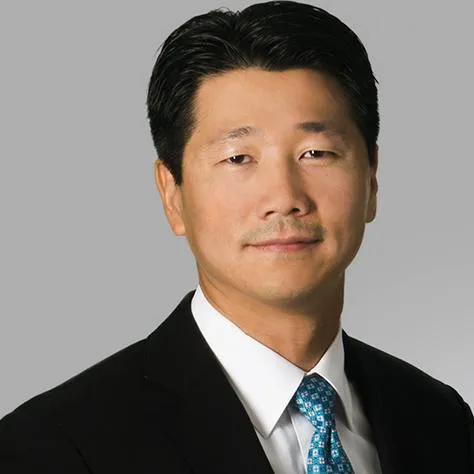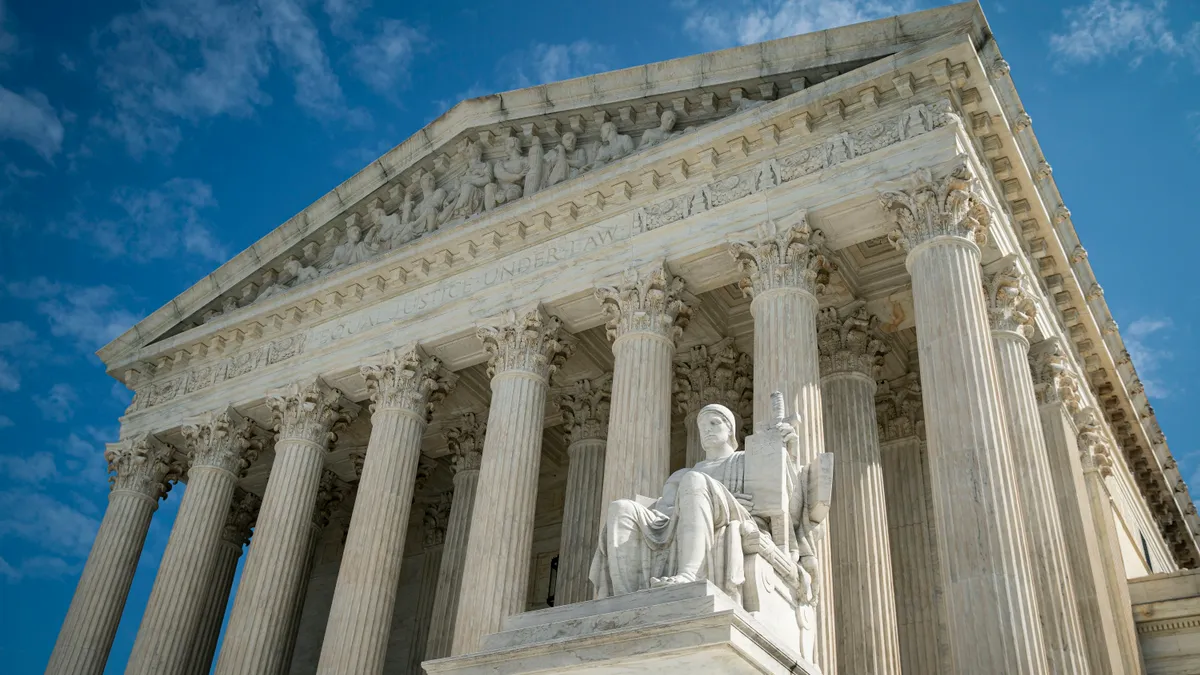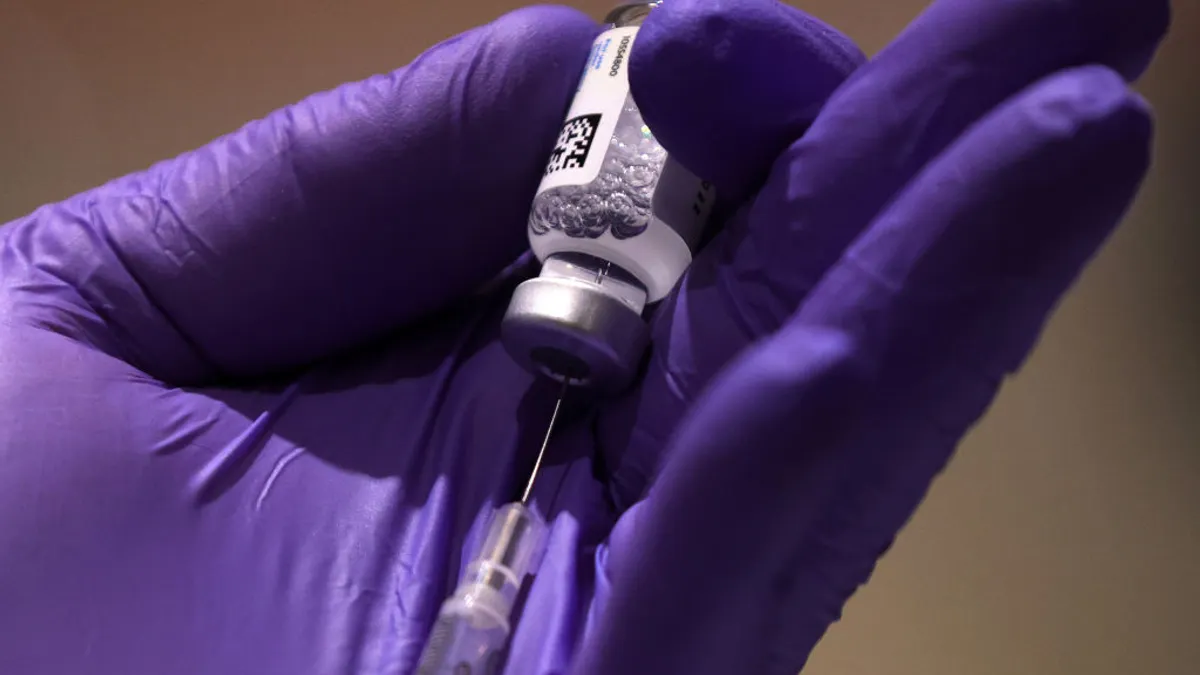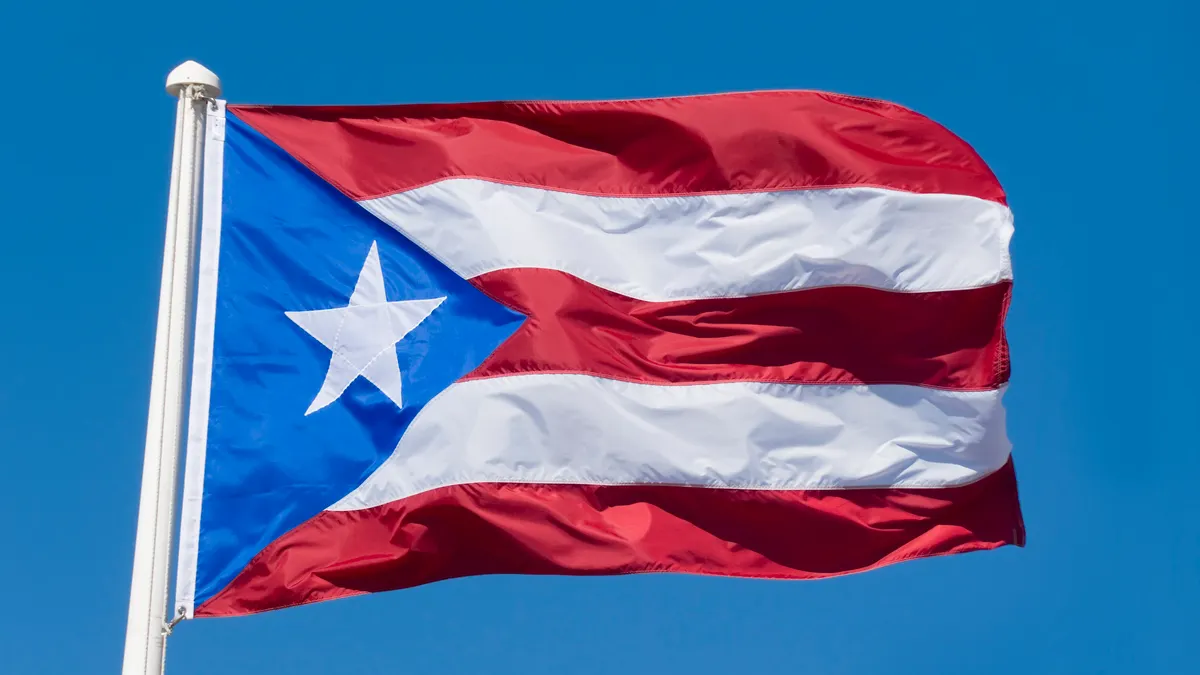How is a new drug like a steam engine? What does an antibody have in common with a coat of paint? These are the ways counsel for Amgen and Sanofi sought to argue their patent case to the Supreme Court yesterday in an effort to clarify the law around the cutting-edge scientific realm of biologics.
A showdown between the pharma giants — which also included Sanofi's partner Regeneron — at the high court questioned the very nature of biologic patents and how far a company can go to protect the methods of developing these complex drugs.
The case is unusual in that it revolves around the "roadmap" for creating brand-new biologics of a certain class rather than the typical biosimilar fight. Amgen argues that Sanofi and Regeneron’s cholesterol drug Praluent infringed upon patents for its own cholesterol treatment Repatha. Both drugs are in the PCSK9 monoclonal antibody class of cholesterol-lowering biologics, but to be clear, Praluent, which is a different molecule altogether, is not considered a biosimilar for Repatha.
Sanofi and Regeneron prevailed in a lower court ruling, which found that two of Amgen's Repatha patents were invalid, giving Praluent room in the marketplace. Amgen appealed that decision to the Supreme Court, where justices spent almost two hours learning — often through metaphors presented by counsel — how the biologics process works within the patent system during oral argument yesterday.

The case has many implications for the industry's use of patents in the relatively new arena of biologic medicines, said Kisuk Lee, a principal IP attorney at the law firm Harness, Dickey & Pierce, who spoke to PharmaVoice in a phone interview and via email. Lee said the case could "fundamentally change patent practice on how to prepare and procure a patent, particularly a chem/bio/pharma patent."
Enabling a process
Beyond the outside comparisons, the case comes down to the definition of "enablement." According to the U.S. Patent and Trademark Office, a patent requires the filer to "describe how to make and how to use the invention … that one skilled in the art must be enabled to make and use."
But anyone with an understanding of biologic drugs knows just how complex they can be to make and use. After all, there isn't a chemical recipe in the way that small molecule drugs are made — biologics require living organisms that differ widely based on a long list of considerations. A biologic like AbbVie's Humira, for instance, is protected by hundreds of patents that cover everything from formulation to manufacturing, a strategy known colloquially as a "patent thicket."
The case between Repatha and Praluent, however, is different from that of a thicket, Lee said. This time, it's about a broad claim made by Amgen that all variations of the PCSK9 are covered under the original patent. Sanofi and Regeneron, in developing their own PCSK9 as a different antibody treatment, claim that Amgen cannot own an entire class of drugs.
"The enablement standard itself has not been changed for a long time while there were numerous lower court cases about how to apply the standard based on presented facts," Lee said. "This modern-day decision will have huge impact on patent prosecution practice, more specifically, how to prepare a genus claim (covering a class of chemical compounds) and detailed descriptions of a patent application."
And there is very little precedence for this type of case in the biopharma space because of the unpredictability of the process, Lee said. The instructional part of a biopharma patent requires details like temperature, pressure, catalysts and more to indicate how it is made.
"A person having an ordinary skill can make and use (an) invention if a mechanical drawing of the device is included in the specification," Lee said. "By contrast, a compound synthesis based on a compound structure is very difficult in most cases."
By disclosing these specifications, a company gains patent protection as a quid pro quo — but also opens itself up to competitors who can tweak the process enough to get through the courts.
Steam engines and paint colors
Amgen's argument rested on the fact that the PCSK9 inhibitor is a class of antibodies that binds to a particular spot on "bad" cholesterol to reduce its presence in the blood. And, like a steam engine has many complex parts, the inhibitor is designed to do one thing for which it should be protected, Amgen's counsel said in the oral arguments.
"When you say an invention, like the James Watts steam engine, you don't say which variant, which embodiment of the steam engine have you claimed — it's the steam engine, that principal invention which covers myriad types of inventions," Amgen's lawyer said. "But to determine what the invention is, you look at the claim, and the claim tells you what the scope of that invention is."
"This case is not about the (generics and biosimilars acts) per se, but has indirect implications about the tension between the groups."

Kisuk Lee
Principal IP attorney, Harness, Dickey & Pierce
He argued that the shape of the antibody that fits into the PCSK9 spot on a cholesterol molecule is protected under Amgen's patent, based on this logic. But Justice Clarence Thomas questioned the metaphor.
"You refer to the steam engine … but it seems as though you're actually trying to patent the use of steam pressure, which you could use for almost anything," Thomas said, referring to the many possible functions of the antibodies.
Alternatively, the counsel for Sanofi and Regeneron compared the process to the invention of a new kind of paint. If part of the paint’s patent included the addition of a pigment, then another party could use that as a roadmap to create many colors, which would leave the patent intact. In the case of antibodies, though, the roadmap is a "trial and error" of millions of antibodies to find the right one.
"You can't look at function and say, 'Oh, that tells me about the structure of the antibodies that are going to bind and block in the right way,'" the lawyer for the two companies said. "And you also can't look at the structure of one antibody and say, 'Oh, if I just tweak it a little bit, it's going to do exactly the same thing.'"
A politically neutral issue
Unlike many patent cases in biopharma that determine whether competitors may enter the market and bring drug prices down through competition, Lee said that this one is not related to the laws that govern generics and biosimilars. However, these factors could play a part in how the court leans, he said.
"This case is not about the (generics and biosimilars acts) per se, but has indirect implications about the tension between the groups," Lee said. "SCOTUS is more likely to focus on the interpretation of the statute … and relevant precedents but would also consider factors relating to how to strike a balance."
Furthermore, the political makeup of the court should have no bearing on how the decision is made, he said.
"This issue is a politically neutral agenda," Lee said, noting that the amicus briefs submitted on behalf of either party did not come from political players.
But different parts of the industry have chosen sides. For instance, companies like AbbVie and GSK submitted amicus briefs in support of Amgen. On the other side of the coin, Pfizer, Eli Lilly and Genentech stood in Sanofi and Regeneron's corner. And although it is not a political issue, the Biden administration has also sided with Sanofi on the issue.
For their part, Sanofi and Regeneron told PharmaVoice prior to the oral arguments that their longstanding belief is that Amgen's patents are invalid.
"Amgen’s attempt to dilute the legal standard for enablement would stifle innovation in all industries," a representative for both companies said in an email. Amgen declined to comment before the court session.
The decision from the Supreme Court should arrive by June, and from there, the patent landscape in biopharma will show whether steam engines and paint colors can adequately portray the difficult area of biologics law.




















